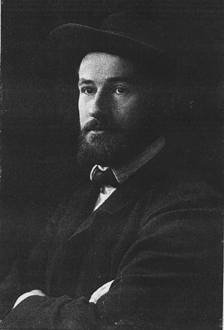Karl Bernhard Zoeppritz facts for kids
Quick facts for kids
Karl Bernhard Zoeppritz
|
|
|---|---|
 |
|
| Born | 22 October 1881 |
| Died | 20 July 1908 (aged 26) |
| Nationality | German |
| Alma mater | University of Freiburg, University of Munich |
| Known for | Zoeppritz equations |
| Scientific career | |
| Fields | Geophysics |
| Institutions | University of Göttingen |
Karl Bernhard Zoeppritz (born October 22, 1881 – died July 20, 1908) was a German scientist. He was a geophysicist, which means he studied the Earth using physics. He made big discoveries in seismology, the study of earthquakes and how waves travel through the Earth. His most famous work is the Zoeppritz equations.
These equations help us understand how earthquake waves behave. Imagine waves hitting a boundary inside the Earth, like where rock types change. Zoeppritz's equations explain how these waves split and bounce. They are super important in reflection seismology. This is a method used to map what's underground, like finding oil or gas.
Contents
Early Life and Education
Karl Zoeppritz was born on October 22, 1881. His hometown was Mergelstetten, a small village in Germany.
He went to university to study natural science and geology. He attended the University of Munich and the University of Freiburg. In 1905, he finished his studies with a special paper. This paper was about the geology of the Swiss Alps. After that, in 1906, he earned a teaching certificate. This allowed him to teach at a university.
His Work in Geophysics
Zoeppritz became very interested in how physics could help us understand geology. At that time, the field of geophysics was quite new. The best place in Germany to study it was the University of Göttingen. There, Zoeppritz became an assistant to a famous scientist named Emil Wiechert.
Understanding Earthquake Waves
Zoeppritz used Wiechert's ideas and information from real earthquakes. He looked at data from big quakes like the 1905 Kangra earthquake and the 1906 San Francisco earthquake. His most important early work was creating "travel-time curves." These curves showed how long it took for different types of earthquake waves to travel through the Earth.
He was the first to realize that these waves, called body waves, can bounce and change when they hit different layers inside the Earth. Other scientists, like Ludwig Carl Geiger and Beno Gutenberg, later used his curves. These curves helped them understand the Earth's layers, like the crust and mantle.
The Zoeppritz Equations
Zoeppritz continued to build on Wiechert's work. He developed a full set of equations that describe how seismic waves behave. These equations explain how waves reflect and pass through boundaries. They are now known as the Zoeppritz equations.
Another scientist, Cargill Gilston Knott, had also worked on similar ideas. But Zoeppritz's work became very well known in Germany. Today, the Zoeppritz equations are used a lot in reflection seismology. They help scientists find things like oil and gas deep underground.
Death and Lasting Impact
Sadly, Karl Zoeppritz died young, at only 26 years old. He passed away in the summer of 1908 from an illness. He did all his important work at Göttingen in just two years.
Much of his work was not published when he died. But his colleagues, Wiechert, Gutenberg, and Geiger, helped publish it. His most important work, the Zoeppritz equations, was finally published in 1919.
Zoeppritz's discoveries were very important for the study of the Earth. In 2002, the German Geophysical Society started a special award. It's called the Zoeppritz Prize, and it's given to talented young geophysicists.

